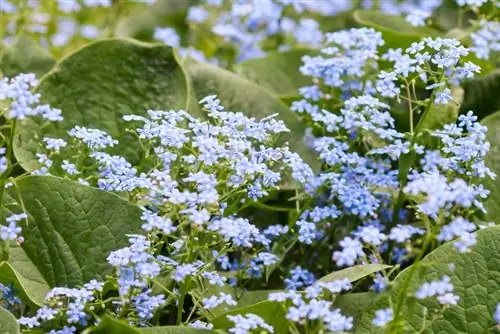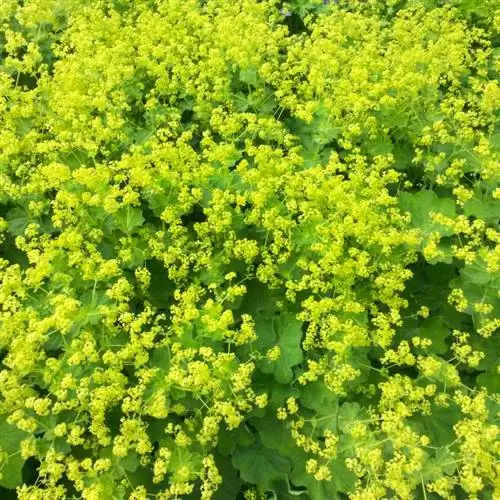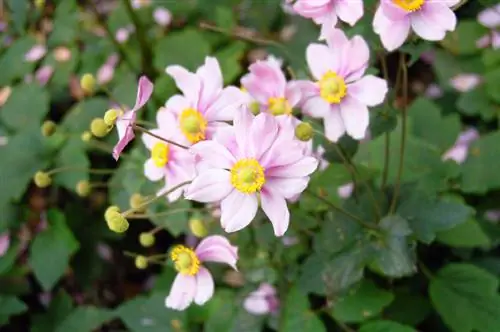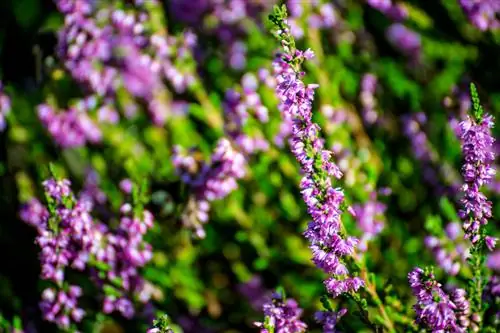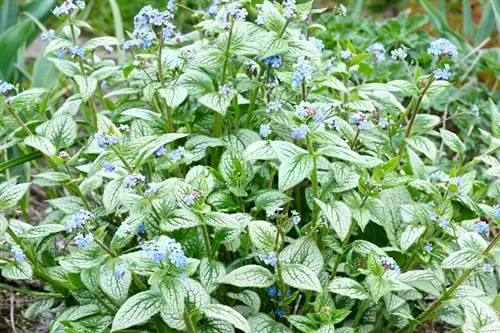- Author admin [email protected].
- Public 2023-12-16 16:46.
- Last modified 2025-01-23 11:20.
The forget-me-not is an undemanding and easy-care plant that can be grown as an annual, biennial or perennial. The pretty flower does not require much care. However, it is important that the soil is always slightly moist, because forget-me-nots do not tolerate dryness at all.
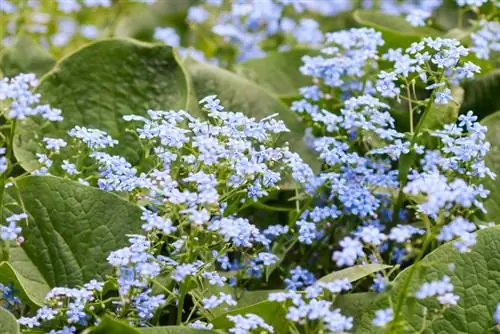
How do you properly care for forget-me-nots?
Forget-me-not care includes regular watering to keep the soil moist, avoiding waterlogging and fertilizer, no need to cut and preventing fungal infestation by watering in the morning. These plants are hardy and do not normally require winter protection.
How are forget-me-nots watered?
- Never allow the soil to dry out completely
- water regularly
- Let the top layer of soil dry before watering
- Avoid waterlogging
- Always water forget-me-nots from below
Forget-me-nots prefer moist soil. You should therefore water more frequently in hot summer months. Allow the soil surface to dry first before reaching for the watering can. Be sure to avoid waterlogging.
If you grow forget-me-nots in a pot, make sure that excess water can drain away. Water more often as the soil in the pot dries out more quickly.
Forget-me-nots are susceptible to fungal diseases such as powdery mildew or gray mold. Always water the plants from below to prevent fungal infestation.
Do forget-me-nots need fertilizer?
The spring flowers like nutrient-rich soil. However, it is not necessary to fertilize the plants. On the contrary, fertilizer increases the risk of fungal diseases.
Do forget-me-nots need to be cut?
Perennial forget-me-nots are cut in autumn so that the plant becomes nice and bushy.
If you want to prevent the forget-me-not from sowing itself, cut off spent inflorescences immediately before seeds can form.
If self-sowing is desired, leave the spent flowers standing. You can also cut them off and shake them out in a suitable location to plant new forget-me-not plants there.
What diseases and pests can occur?
- Aphids
- Spider mites
- Gray horse
- Powdery mildew
Young shoots in particular quickly become victims of aphids and, more rarely, spider mites. You can combat a light infestation with soapy water or spraying with nettle broth. If there is a severe infestation, it is better to remove the affected plants completely so that the pests cannot spread any further.
Fungal diseases such as gray mold and powdery mildew usually occur when the humidity is too high, for example in very humid summers. Fighting fungal diseases is very difficult. Try diluted fresh milk squirted over the plants. Most of the time, the only option is to pull out the plants and dispose of them with household waste.
To prevent fungal infestation, it is best to water forget-me-nots in the morning, as the air humidity is reduced by wind during the day.
Are forget-me-nots hardy?
The forget-me-nots grown in the garden are descended from the native forget-me-not species and are therefore used to the cold. Winter protection is only necessary if you planted the plants late in the fall.
Plant forget-me-nots as early in the year as possible. The spring bloomers then have enough time to prepare for the cold season.
Tip
The roots of the forget-me-not tolerate s alt, for example road s alt, poorly. This is also why it is important that you water regularly to dilute any residue.

